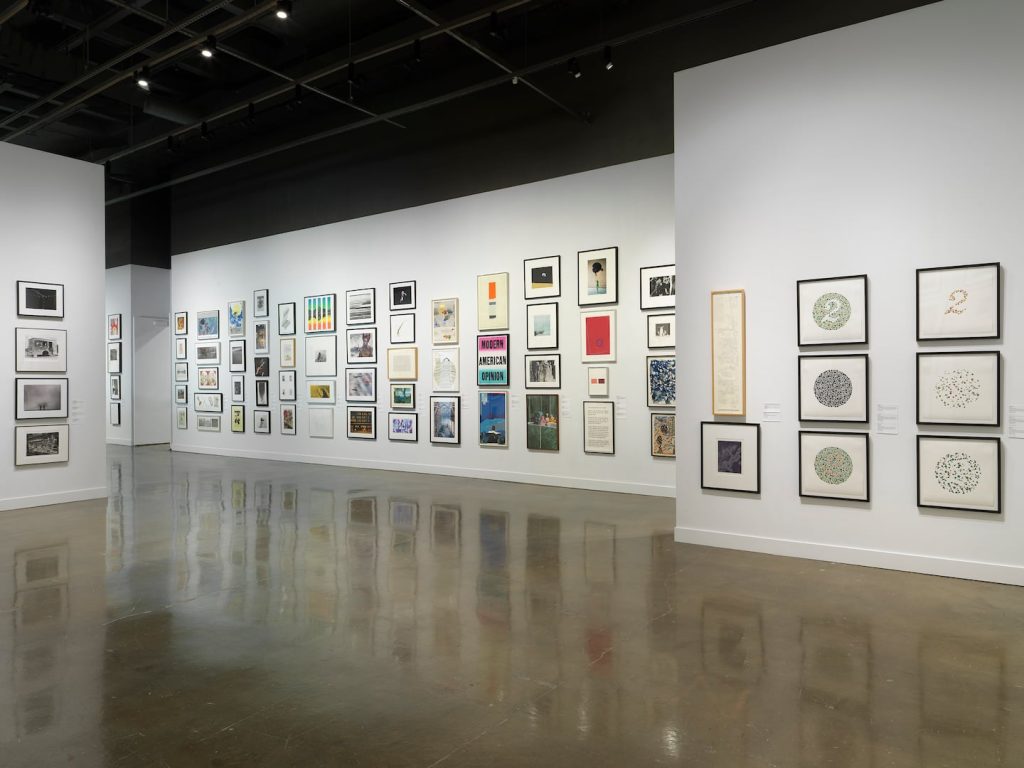
The annual program this year begins Aug. 26, when MIT’s List Visual Arts Center will invite the public to view the 520 contemporary photos and prints in the lending collection at MIT’s Hayden and Reference Galleries.
After public viewing ends Sept. 14, MIT students who entered a lottery will return to the galleries to pick up their selections.
The program has been popular with students and artists as well.
“No artist wants their work to be collected by a museum and to sit in storage forever and come out once every 10 years,” said Natalie Bell, MIT List’s chief curator. “That’s not why they’re doing this. So it’s a really unique collection in that way, because the priority is for people to experience the work and to live with it.”
This year’s collection features new acquisitions from artists like Pedro Gómez-Egaña, Suzanne Kite, Joan Jonas, Christine Sun Kim, and Sónia Almeida. The collection also includes work from both Boston-based artists and early career artists.
Students who have taken part in years past said that having works of art in their living spaces transformed their perspectives. Kartik Chandra, a PhD in the computer science and artificial intelligence lab, said having the work in his home transformed the way he thought about it.
“I think there’s this very distinct sense of like, if you live with a work of art for a long, extended period of time, then you develop a kind of relationship with it that’s different from the fleeting relationship you have at the art museum,” Chandra said. “When it becomes a part of your home and when it becomes a part of your living space then over time … there’s a kind of intimacy that develops with it.”
The piece Chandra had selected was “Mrs. Webster and Her Hummingbirds,” a 1936 photograph by former MIT professor Harold Eugene Edgerton shot at 1/100,000th of a second, so fast that it clearly captured the hummingbirds’ wings. Chandra picked it because he was amazed by its history. But it ultimately came to mean more to him, he said, as a metaphor for his experience in graduate school, which he described as being centered in chaos.
“I don’t think I would ever have really thought about this photograph in this way unless I had spent hundreds of days waking up next to it every day,” Chandra said.

It wasn’t just the presence of the pieces that stood out to students. For some, it was also how they felt when the work was gone.
David DePalma, a physics graduate student, who’d borrowed art on and off for 4 years, said during the 5 months when there wasn’t a piece of art from the collection hanging on his wall, he just left the wall blank.
“It’s not something I can just go to a store — go to Newbury Comics, and buy a poster or something and fill up the space, because it’s not the same quality of artwork,” DePalma said. “It’s kind of irreplaceable when in that space, when it’s missing.”
DePalma said the blank space filled him with anticipation.
One year, DePalma borrowed Kota Ezawa’s “Earth from Moon” and loved it so much he went in search of a print. He would have bought one, but the $3,000 price was too much.
Maria Lostumbo, MIT List’s exhibitions registrar said sometimes she has to remind students the art they borrow is not for sale. She directs them to websites like Artmap or Artsy where they can buy work. It’s nice to encourage students to be patrons of the arts, she said.
But inevitably, there is some disappointment, said Shirley Villalobos, the List’s permanent collections registrar who oversees the returns of the work.
“I will say that students don’t want to relinquish the work because they love it so much, which is really nice, and it makes the experience really fulfilling, because students definitely have a really nice relationship with the artwork that they select,” Villalobos said.

